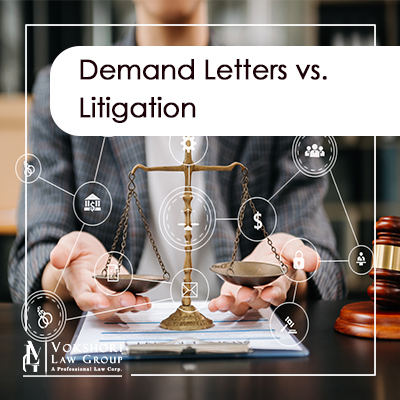
When faced with a dispute, deciding between starting with a demand letter or jumping straight into litigation can significantly impact the outcome and efficiency of the resolution process. Each approach has its advantages and should be chosen based on the specific circumstances of your case. Here, we’ll explore the pros and cons of each method to help you make an informed decision.
Starting with a Demand Letter
A demand letter is often the first step in dispute resolution. It is a formal letter sent to the opposing party outlining the facts of the dispute, the legal grounds of your claim, and the specific actions you are requesting to resolve the matter. Here are some key benefits of starting with a demand letter:
Pros of a Demand Letter:
-
Cost-Effective:
- Demand letters are significantly cheaper than litigation. They involve minimal legal fees compared to the extensive costs associated with court proceedings.
-
Preserves Relationships:
- Demand letters are less adversarial than litigation, which can help maintain a working or personal relationship between the parties involved.
-
Opens the Door to Settlement:
- By initiating communication, a demand letter creates an opportunity for early settlement, potentially avoiding the need for litigation altogether.
-
Time-Saving:
- Resolving disputes through a demand letter can be much quicker than the lengthy litigation process, leading to faster outcomes.
-
Legal Clarity:
- A demand letter clearly lays out the facts and laws supporting your position, which can sometimes prompt the opposing party to take corrective action without the need for further legal action.
When Litigation Might Be More Effective
While a demand letter can be an effective first step, there are situations where litigation might be the better option:
Pros of Litigation:
-
Compulsory Process:
- If you know from prior experience that the opposing party is unlikely to respond to a demand letter, starting with litigation can compel them to participate in the dispute resolution process.
-
Immediate Legal Action:
- Litigation allows for immediate legal actions such as injunctions or temporary restraining orders, which can be crucial when dealing with urgent matters or statutory deadlines.
-
Discovery Process:
- The litigation process includes discovery, which allows you to obtain evidence from the opposing party that might not be voluntarily disclosed. This can be vital for building a strong case.
-
Legal Authority and Enforcement:
- A court ruling carries legal authority and is enforceable by law, resulting in a binding judgment that the defendant must comply with.
-
Potential for Damages and Costs:
- Successful litigation can result in monetary damages, attorney fees, and court costs being awarded, providing compensation for the harm suffered and potentially deterring future misconduct by the defendant.
Conclusion
Choosing between a demand letter and litigation depends on the specific circumstances of your dispute. Demand letters offer a cost-effective, less adversarial, and potentially quicker resolution. However, litigation provides a compulsory process, immediate legal actions, access to discovery, enforceable judgments, and the potential for damages and costs.
When advising clients or deciding on your approach, consider the unique aspects of the case, the behavior of the opposing party, and the urgency of the matter. Both demand letters and litigation have their place in dispute resolution, and selecting the right tool can significantly influence the effectiveness and efficiency of achieving a favorable outcome.






